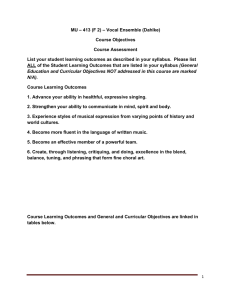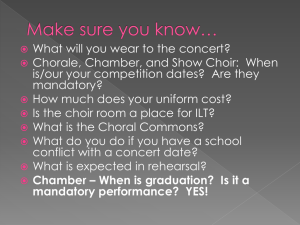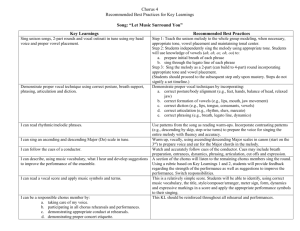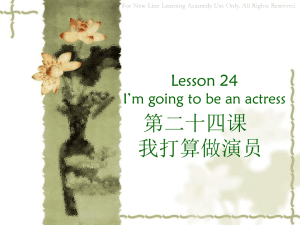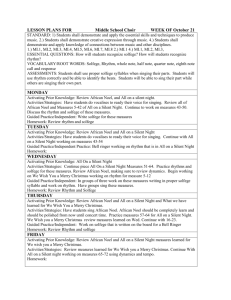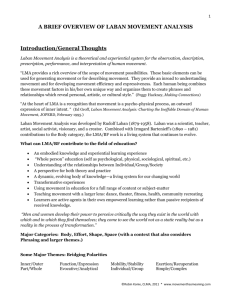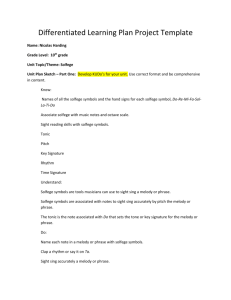Week of: November 13-26 Grades: 6th, 7th, 8th Lesson Plans for
advertisement
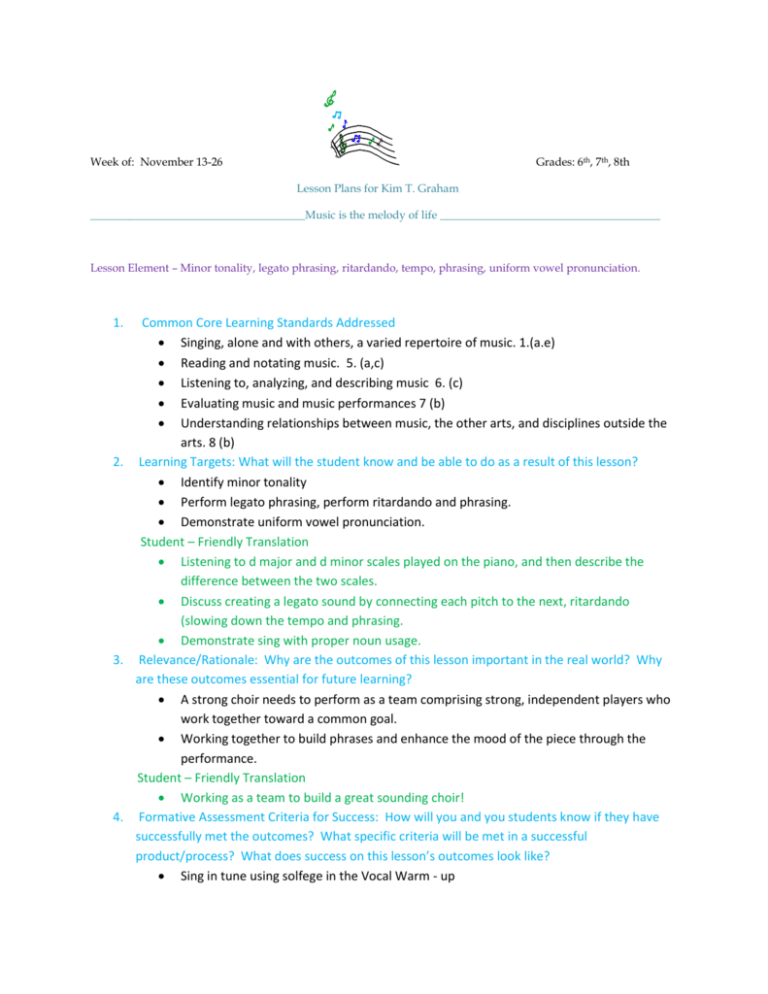
Week of: November 13-26 Grades: 6th, 7th, 8th Lesson Plans for Kim T. Graham ______________________________________Music is the melody of life _______________________________________ Lesson Element – Minor tonality, legato phrasing, ritardando, tempo, phrasing, uniform vowel pronunciation. 1. Common Core Learning Standards Addressed Singing, alone and with others, a varied repertoire of music. 1.(a.e) Reading and notating music. 5. (a,c) Listening to, analyzing, and describing music 6. (c) Evaluating music and music performances 7 (b) Understanding relationships between music, the other arts, and disciplines outside the arts. 8 (b) 2. Learning Targets: What will the student know and be able to do as a result of this lesson? Identify minor tonality Perform legato phrasing, perform ritardando and phrasing. Demonstrate uniform vowel pronunciation. Student – Friendly Translation Listening to d major and d minor scales played on the piano, and then describe the difference between the two scales. Discuss creating a legato sound by connecting each pitch to the next, ritardando (slowing down the tempo and phrasing. Demonstrate sing with proper noun usage. 3. Relevance/Rationale: Why are the outcomes of this lesson important in the real world? Why are these outcomes essential for future learning? A strong choir needs to perform as a team comprising strong, independent players who work together toward a common goal. Working together to build phrases and enhance the mood of the piece through the performance. Student – Friendly Translation Working as a team to build a great sounding choir! 4. Formative Assessment Criteria for Success: How will you and you students know if they have successfully met the outcomes? What specific criteria will be met in a successful product/process? What does success on this lesson’s outcomes look like? Sing in tune using solfege in the Vocal Warm - up Critiquing their pronunciation, particularly of vowels and vowel sounds. Sing with correct dynamics in Noel ,Noel – Beautiful December Aurally identify tunes in minor tonality as you play familiar tunes in major and minor keys. Show thumbs up for minor tonality tunes or scales when played or sung. Record student’s performance and view with individual performance. Student – Friendly Translation 5. 6. 7. 8. Using solfege in the vocal warm up Students will show thumbs up when they recognize minor modes. Sing in groups of four and listen to each group for part independence using correct vowel pronunciation and legato singing. Making sure the use ritardando and phrasing properly. Section work (altos, sopranos and baritones- separately ) Watch and listen to recording and do self-assessment – based on the following: Breath management, singing in head voice, expressive singing, and correct part singing. Activities/Task: (What learning experiences will students engage in? How will you use these learning experiences or their student products as formative assessment opportunities?) Bell work (two Weeks – Key of c, d and f major sight reading, note recognition exercise – test on Friday November 22) Play the round game using Experience Choral Music text and cd. Vocal Warm –Up ( Jennings and Essential Musicianship handouts) Use solfege w/hand signs Choral Music Terms (legato, ritardando, phrasing) Sight-Reading music repertoire. Find and tune chords for Noel, Noel and Beautiful December. Take video of performance. Rehearse Music repertoire. Find the origins of Christmas Carols. Resources/Materials? (What texts, digital resources, and materials will be used in this lesson?) Choral music w/cd’s – piano – recording device – cd player – Jennings sight reading books, Experiencing Choral Music, Essential Musicianship (warm ups) Access for All: (How will you ensure that all students have access to and are able to engage appropriately in this lesson? Consider all aspects of student diversity.) Try to incorporate students’ cultural and experiences in the instruction and style of music. Avoid cultural stereotypes, encourage students to share their musical cultures in the classroom. (ex. If students attend church, what kind of music do they sing in their church, or what kind of Christmas music do they sing for their holiday traditions). Helping students expand their music literacy. Modifications/Accommodations Modify assignments as needed. Be aware of students being embarrassed of their voices in group sections. Model appropriate singing in phrasing, clapping rhythms, solfege hand-signs. Articulation practice with emphasis on staccato notes. Allow extra time for sight reading and bell work if needed.
